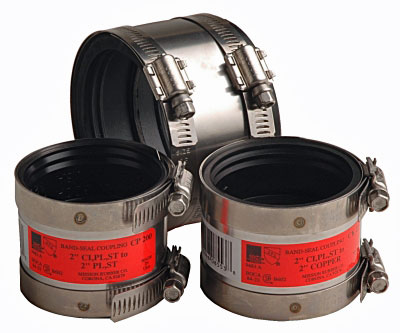Ken
New Member
Hi All,
I have reviewed post already covering this issue but didn't get a solid answer from them so any further advice will be greatly appreciated.
My problem is that I have a couple of 3" ABS combo's that have a very slow leak at one of the hubs. My project is a whole house under slab DWV installation. All of my plumbing is contained in 2'-3' trenching 4" wide.
I know that I have to cut out the existing fittings and replace them so I have a lot of digging to do to get reasonable access. My concern is connecting the new fitting into an existing, non-flexible system. I have read up on Fernco and Mission no hub couplings but become very confused as to which model to use in my under slab project. Furthermore, I become concerned about the integrity of the system, which will be inaccessible once the pad is poured. I am guessing that I will have to use at least two couplings to install a new combo which leads me to believe that this will create a very weak spot in my plumbing system.
First off, are these couplings permitted under a slab? If so which model should I use. Secondly, it seems to me that the joints that theses couplings create are subject to failure over time due to soil shifts, rusting/corroding metal, or rotting rubber.
I would sure like to get some opinions and advice on the reliability of these couplings for under slab plumbing (if they are permitted), which model to use, or perhaps other solutions for this problem.
BTW, I am not a professional plumber, but have plumbed a smaller, whole house, project in the past with out issues.
I have reviewed post already covering this issue but didn't get a solid answer from them so any further advice will be greatly appreciated.
My problem is that I have a couple of 3" ABS combo's that have a very slow leak at one of the hubs. My project is a whole house under slab DWV installation. All of my plumbing is contained in 2'-3' trenching 4" wide.
I know that I have to cut out the existing fittings and replace them so I have a lot of digging to do to get reasonable access. My concern is connecting the new fitting into an existing, non-flexible system. I have read up on Fernco and Mission no hub couplings but become very confused as to which model to use in my under slab project. Furthermore, I become concerned about the integrity of the system, which will be inaccessible once the pad is poured. I am guessing that I will have to use at least two couplings to install a new combo which leads me to believe that this will create a very weak spot in my plumbing system.
First off, are these couplings permitted under a slab? If so which model should I use. Secondly, it seems to me that the joints that theses couplings create are subject to failure over time due to soil shifts, rusting/corroding metal, or rotting rubber.
I would sure like to get some opinions and advice on the reliability of these couplings for under slab plumbing (if they are permitted), which model to use, or perhaps other solutions for this problem.
BTW, I am not a professional plumber, but have plumbed a smaller, whole house, project in the past with out issues.

